#prince alexander of teck
Photo
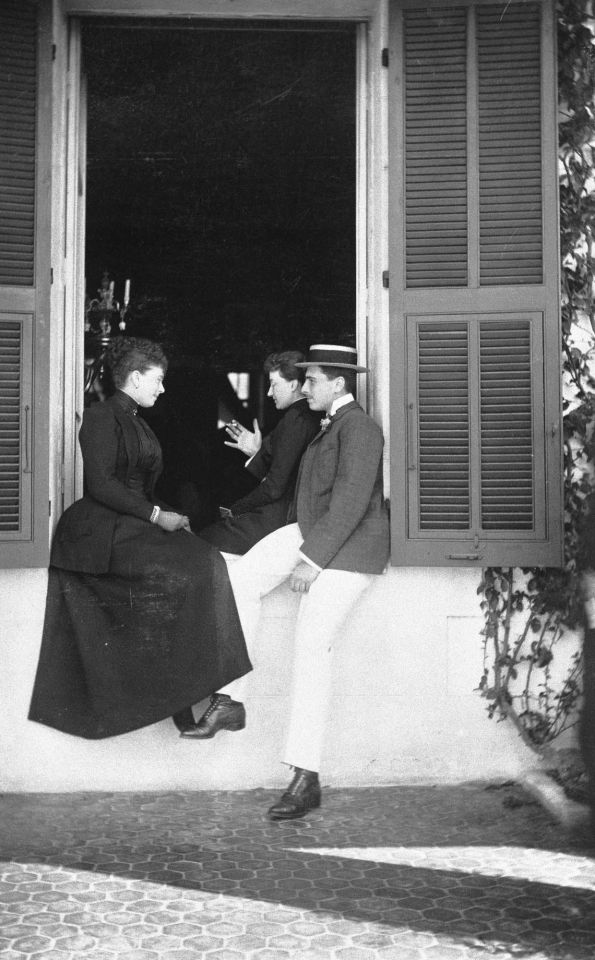
Princess Victoria Mary of Teck (later Queen Mary), Prince Alexander of Teck and Gian Tufnell at Cannes, 1892
41 notes
·
View notes
Text
Royal Wedding on 10 February 1904 at St George's Chapel, Windsor Castle.
Prince Alexander of Teck (29) and Princess Alice of Albany (20).
The bride was the eldest born child of Queen Victoria's youngest son the late Prince Leopold, Duke of Albany by his German wife Princess Helena of Waldeck and Pyrmont.
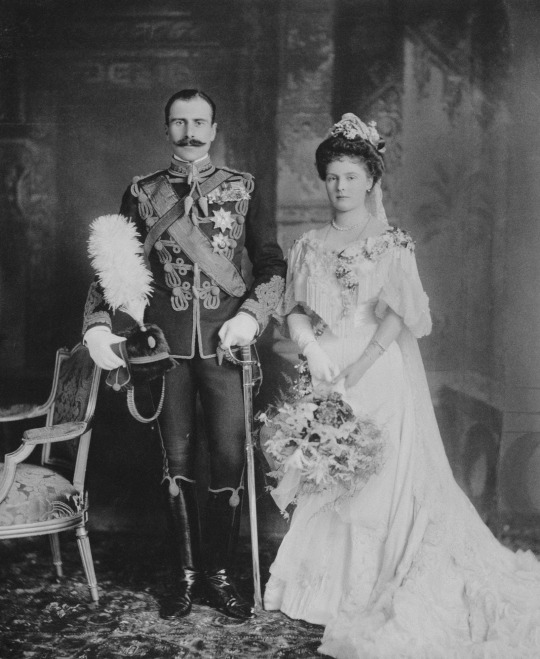

The bridegroom was the youngest son of Francis, Duke of Teck by his wife Princess Mary Adelaide of Cambridge. His elder sister was the wife of Princess Alice's first cousin King George V.
The beautiful bride in her wedding dress


Their bridesmaids

The bride and bridegroom with the bridesmaids.

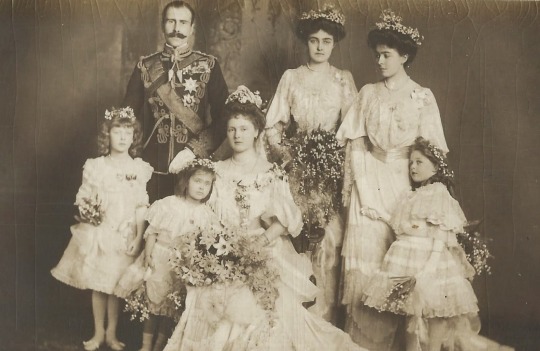

#princess alice of albany#prince alexander of teck#princess margaret of connaught#princess patricia of connaught#mary princess royal#princess helena of waldeck and pyrmont#princess mary of teck#1904#1900s#british royal wedding#british royal family#british royal fandom
44 notes
·
View notes
Text



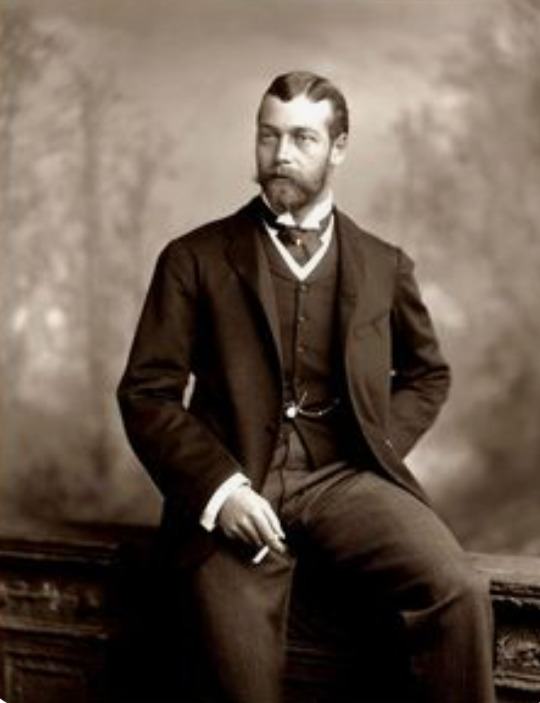


Prince George of Wales and his "chum" Princess Marie of Edinburgh (Missy)
Marie of Edinburgh (Marie Alexandra Victoria; 1875 – 1938) was born into the British royal family. Her parents were Prince Alfred, Duke of Edinburgh (later the reigning Duke of Saxe-Coburg and Gotha) and Grand Duchess Maria Alexandrovna of Russia (daughter of Tsar Alexander II).
"Missy" (her nickname) grew into a “lovely young woman” with “sparkling blue eyes and silky fair hair.” She did not lack suitors from a young age and was courted by several royal bachelors, including Prince George of Wales. Prince George served for many years under his uncle, Prince Alfred, Duke of Edinburgh, as a naval cadet in Malta. There, he grew close to young Marie.
Queen Victoria, the Prince of Wales and the Duke of Edinburgh all approved of the match. Missy seemed ameneable to the idea of George as a possible husband. George's mother, Alexandra Princess of Wales and Marie's mother, the Duchess of Edinburgh vetoed the match. The Duchess of Edinburgh did not wish for her daughter to remain in England, she never liked her husbands native land.
Another reason the Duchess of Edinburgh was against the idea of the marriage between George and Marie was the fact that they were first cousins and although first cousin marriages were accepted in England, they were not permitted by the Russian Orthodox Church.
Thus, when George officially proposed to her, Marie did as she was told by her mother and informed him that the marriage was impossible and that he must remain her “beloved chum”. Marie's father was devastated, as his dearest dream had been to see Marie married to George.
George continued on his unhurried search for a suitable Princess to marry and found a solid and beloved life partner in Princess Mary of Teck (who had been his brother's fiance.) Marie married the Crowned Prince of Romania, Ferdinand.
Marie kept gifts that George gave her during their courtship until her death, and they remained close friends for the whole of their lives. In 1901, well after they had both married other people, she wrote to him that those years in Malta were the happiest she ever had.
Photographs: 1. Marie and her family and George at the time he was "courting" the young woman; 2 and 3. Young Marie; 4. George V; 5. Princess Marie of Romania; 6. George and Mary, Ernst Ludwig and Victoria Melita and Ferdinand and Marie.
#king george v#Queen Marie of Romania#Victoria Melita#King Ferdinand of Romania#Princess of Edinburgh#Prince of Wales#Ernst Ludwig#Grand Duchess Victoria Feodorovna
18 notes
·
View notes
Text
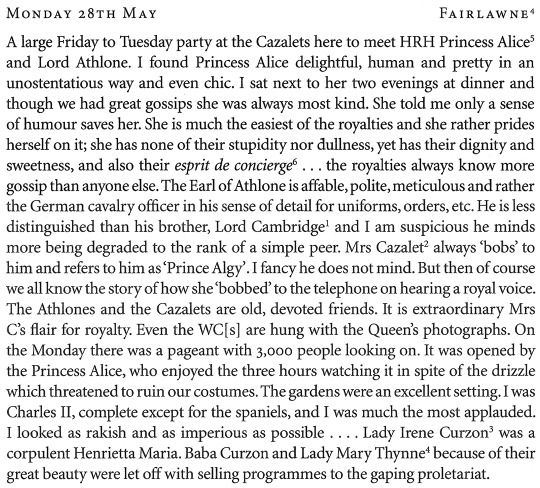
Henry ‘Chips’ Channon: The Diaries (Vol. 1), 1918-38, entry for 28th May 1923
—
Monday 28th May — Fairlawne¹
A large Friday to Tuesday party at the Cazalets here to meet HRH Princess Alice² and Lord Athlone. I found Princess Alice delightful, human and pretty in an unostentatious way and even chic. I sat next to her two evenings at dinner and though we had great gossips she was always most kind. She told me only a sense of humour saves her. She is much the easiest of royalties and she rather prides herself on it; she has none of the stupidity nor dullness, yet has their dignity sweetness, and also their esprit de concierge³ . . . the royalties always know more gossip than anyone else. The Earl of Athlone is affable, polite, meticulous and rather and the German cavalry officer in his sense of detail for uniforms, orders, etc. He is less distinguished than his brother, Lord Cambridge⁴ and I am suspicious he minds more being degraded to the rank of a simple per. Mrs Cazalet⁵ always ‘bobs’ to him and refers to him as ‘Prince Algy’. I fancy he does not mind. But then of course we all know the story of how she ‘bobbed’ to the telephone on hearing a royal voice. The Athlones and the Cazalets are old, devoted friends. It is extraordinary Mrs C’s flair for royalty. Even the WC[s] are hung with the Queen’s photographs. On the Monday there was a pageant with 3,000 people looking on. It was opened by the Princess Alice, who enjoyed the three hours watching it in spite of the drizzle which threatened to ruin our costumes. The gardens were an excellent setting. I was Charles II, complete except for the spaniels, and I was much the most applauded. I looked as rakish and as imperious as possible . . . . Lady Irene Curzon⁶ was a corpulent Henrietta Maria. Baba Curzon and Lady Mary Thynne⁷ because of their great beauty were let off with selling programmes to the gaping proletariat.
—
1. An estate in west Kent, near Tonbridge, owned by the Cazalet family from 1880.
2. Princess Alice Mary Victoria Augusta Pauline (1883-1981), daughter of Prince Leopold, Duke of Albany, youngest son of Queen Victoria; she was therefore the King’s cousin. She married in 1904 Prince Alexander of Teck (1874-1957), brother of the future Queen Mary; his title was anglicised in 1917 after the creation of the House of Windsor and he was granted the earldom of Athlone, after which his wife was known as Princess Alice, Countess of Athlone.
3. The spirit of a concierge; collecting gossip about all who pass through.
4. Adolphus Charles Alexander Albert Edward George Philip Louis Ladislaus, Duke of Teck (1868-1927). Like his brother, he relinquished his German titles in 1917 and, as brother of the Queen Consort, was created 1st Marquess of Cambridge. His younger brother was one rank below him in the peerage.
5. Maud Lucia Heron-Maxwell (1868-1952), married in 1893 William Marshall Cazalet (1865-1932); she was the mother of Victor Cazalet.
6. Mary Irene Curzon (1896-1966), known as Lady Irene Curzon after her father’s advancement to an earldom in 1911, was Lord Curzon’s eldest daughter. On his death in 1925 she inherited the barony of Ravensdale, and in 1958 was enabled to sit in the House of Lords by being granted a life peerage. She never married, declining a proposal from Victor Cazalet.
7. Lady Mary Beatrice Thynne (1903-74), third daughter of the 5th Marquess of Bath; she married in 1927 Charles Wilson (1904-74), 3rd Baron Nunburnholme.
#chips channon#channon diaries#1923#1920s#william cazalet#maud cazalet#alice athlone#alexander athlone#adolphus cambridge#irene ravensdale#baba metcalfe#mary nunburnholme#🕰️
4 notes
·
View notes
Photo

Princess Alice, Countess of Athlone, was born on 25 February 1883 at Windsor Castle to the Duke and Duchess of Albany. She married her second cousin once-removed, Prince Alexander of Teck, the brother of Princess Mary, the Princess of Wales (later Queen Mary, consort of George V).
Fonte NPG
11 notes
·
View notes
Text
Prije točno 50 godina kraljica Elizabeta II posjetila je Hrvatsku, zemlju u kojoj je rođen i njezin pradjed, evo tko je on

OSJEČANIN FRANZ VON TECK
Na tronu je sjedila 70 godina, no, nažalost, Hrvatsku je posjetila tek jednom, u listopadu 1972. godine, iako iz naše zemlje vuče korijene
U Zagreb je kraljica Elizabeta II stigla 20. listopada 1972. godine vlakom iz Đakova i to u pratnji princa Philipa i njihove jedine kćeri, princeze Anne. Zajedno su posjetili tadašnju Jugoslaviju, susreli se s predsjednikom Josipom Brozom Titom i tijekom pet dana obišli Zagreb, Dubrovnik, Đakovo, Pulu i Brijune.
No, ono što je najzanimljivije, a često se zaboravlja, je da veze britanske kraljevske obitelji i Hrvatske sežu u daleku prošlost. Poveznica je ponovno isplivala s dna ormara 2016. godine kada su princ Charles, sada već kralj Charles III i njegova supruga Camilla posjetili Hrvatsku.
Tada je javnost doznala kako je pradjed kraljice Elizabete II bio Franz von Teck, Osječanin punog imena Franz Paul Karl Ludwig Alexander von Teck koji je oženio sestričnu tadašnje kraljice Viktorije, Mary Adelaide od Cambridgea, koju su pak zbog izgleda zvali Debela Mary. Upravo zahvaljujući njoj ušao je u kraljevsku obitelj, iako baš za njih i nije prvi odabir.
Naime, iako mu je otac bio plemić, majka nije, pa je njegov brak bio lišen plemićkih privilegija, budući da nisu bili jednakog društvenog statusa. Njihova kći Mary spletom je okolnosti postala zaručnica, a nakon toga i supruga budućeg kralja Georgea V., a jedno od njihove djece bio je i George VI, otac kraljice Elizabete II.
Franz von Teck ostao je udovac sa 60 godina, a on sam umro je u Beču u bordelu 21. siječnja 1900. godine, nakon čega je njegovo tijelo u najvećoj tajnosti prebačeno u London, koji se navodi kao službeno mjesto smrti.
Inače, tijekom posjeta Zagrebu, kraljici je tada priređen svečani doček tijekom kojeg su intonirane britanska, jugoslavenska i hrvatska himna. Kako je tportal već pisao, kraljica se otvorenim automobilom odvezla do središta Zagreba te se prošetala i porazgovarala s dijelom okupljenih građana koji su ju srdačno dočekali, a zatim je bila u Banskim dvorima na svečanom ručku koji joj je priredio njen domaćin Jakov Blažević, predsjednik Sabora SR Hrvatske.
Nakon ručka Elizabeta II posjetila je palaču Akademije na Zrinjevcu te ju je na ulazu dočekao predsjednik akademik Grga Novak sa suradnicima. Kraljica je ostavila potpis i Akademijinoj u spomen-knjizi (Elisabeth R, October 20th 1972), a posebno ju se dojmila Bašćanska ploča u atriju Akademijine palače, jer se radi o kraljevskom dokumentu, darovnici hrvatskog kralja Zvonimira, koji je stotinjak godina stariji od engleske Magna charte libertatum. U svojoj zdravici na ručku u Banskim dvorima kraljica Elizabeta je rekla:
'Oduševljena sam što nas je naš posjet Jugoslaviji doveo u Republiku Hrvatsku i u drevni divni grad Zagreb. Jučer smo vidjeli Dubrovnik i dio veličanstvenog obalnog pejzaža, jutros smo bili u Đakovu, a sada nas tako ljubazno dočekujete u središtu bogate povijesti i kulture Hrvatske. Impresivan razvitak Zagreba u posljednjih 25 godina odražava energičnu odlučnost svih njegovih građana da izgrade sretnu i naprednu naciju. Kao pomorska nacija, Britanija je vjekovima vjerojatno imala čvršće veze s Hrvatskom i njezinom dugom obalom nego s bilo kojim drugim dijelom Jugoslavije. Danas se stvaraju novi kontakti, kako sve više i više Britanaca dolazi da uživa u gostoprimstvu i suncu vaših ljetovališta. Nadam se da će oni zauzvrat pridonijeti jednako korisnim doprinosom vašoj privredi. Veoma nas se dojmilo sve što smo vidjeli, a osobito topao doček što su nam ga priredili mnogi vaši građani. Želim neprekidan uspjeh i svaku sreću svim građanima Hrvatske.'
Tportal.hr
Read the full article
2 notes
·
View notes
Photo
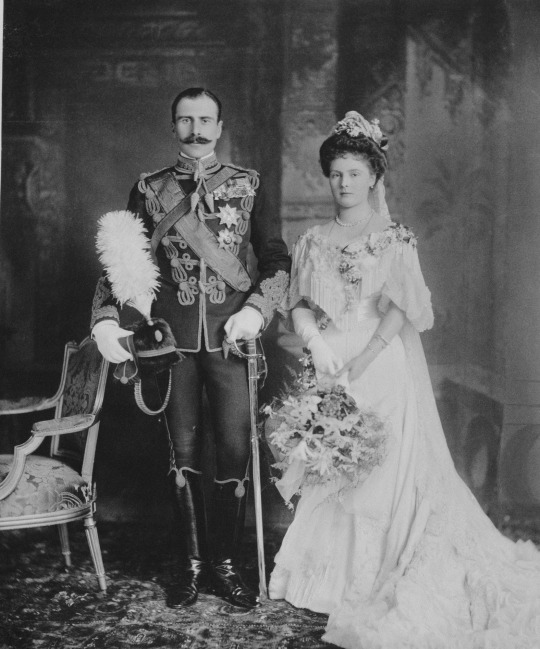
Of course, the great event of next week is the Royal wedding, the first celebrated at St. George's Chapel, Windsor, since the somewhat ill-fated marriage of Princess Christian's pretty and accomplished daughter, Princess Louise of Schleswig-Holstein, to Prince Aribert of Anhalt. Princess Alice of Albany is said to have selected the place where she is to become Princess Alexander of Teck on account of the fact that her much-loved parents were married there, and because she herself has such intimate and affectionate associations with Windsor Castle. On the occasion of the last Royal wedding there, the German Emperor and Empress – each of them a first cousin of the bride – were present, and on this occasion their Majesties guests will include a Crowned Head and his Consort – the King and Queen of Wurtemberg, whose connection with the royal bride is somewhat complicated, as the King is only her uncle owing to the fact that his first wife was her mother's sister.
As this is be essentially a “young” wedding by far the prettiest sight of all will be the two little bridesmaids, the “two Marys” the only daughter of the Prince and Princess of Wales and the only daughter of the Duke of Teck. All five are to wear blue and silver costumes and wreaths of forget-me-nots – a scheme of colouring singularly becoming to the two Princesses of Connaught. Prince Alexander will be supported by his brother, Prince Francis, as best man, and though the bride will be given away by the King, she will also have a supporter in the person of her brother, the Duke of Saxe-Coburg and Gotha.
Princess Alice has received an extraordinary number of presents of a useful kind. She seems to have allowed it to become known that she does not wish to add greatly to her stock of jewels, and this would be indeed, unnecessary, as the bridegroom already possesses some very fine jewels, which belonged to his mother, and which he will, of course, give to his wife. The King and Queen set the example of giving the young couple a useful gift, their present being a fine service of silver plate – of more actual use than would appear at first sight, for even the most unostentatious of Royal persons is not unfrequently called upon to give a banquet. The engagement ring is a sapphire surrounded by fine diamonds and one fo the first and most appreciated gifts received by the bride-elect was a charming minature of her fiancé, painted to the order of the Duchess of Albany. As the Prince does not intend to give up his profession on his marriage, it is probably that the Princess will find herself quartered in South Africa ere long. It is said that she regards the prospect with great pleasure, though the thought must fill her mother, who has been so devoted to Princess Alice from infancy, with a good deal of apprehension.
Prince and Princess Alexander of Teck will begin their married life at Brocket Hall, and it is a sign of the times that a Royal couple should honeymoon in a mansion lent to them by one who began life as a herd boy in Scotland! But Lord Mount-Stephen is one of the most splendid and estimable members of the Upper House, and many will think that it is he who is conferring an honour on the young couple. Brocket Hall has many historic associations. It was a favourite home of two great statesmen, Lord Melbourne and Lord Palmerston, and Queen Victoria, not long after her marriage, spent there a few days, a splendid lunch being served in her honour in the Ball Room. Brocket is a fine, comfortable old house with a most delightful garden and park, through which meanders the River Lea. The Prince and Princess of Wales have stayed there.
The King has decided to hold a Chapter of the Order of the Garter on the eve of the Royal wedding. The ceremonial will take place in the Throne Room, and a unique feature will be the presence of our popular Queen as the one Lady of the Garter. The oldest member of the Order, the venerable Duke of Cambridge, will not, it is feared, be well enough to be present. After the Chapter, the King will entertain the Knights at a great banquet in St. George's Hall.
Black and White, Feb 6, 1904
40 notes
·
View notes
Photo
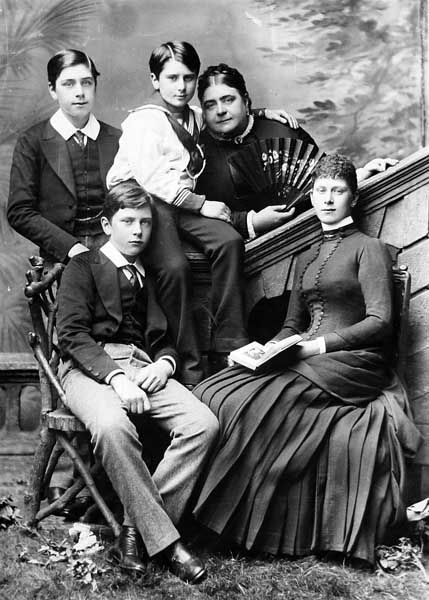
Princess Mary Adelaide of Cambridge, Duchess of Teck with her children Princess Victoria Mary [Queen Mary], Prince Alexander [1st Earl of Athlone], Prince Francis, and Prince Adolphus [1st Marquess of Cambridge].
#mary adelaide#princess mary adelaide#duchess of teck#teck#duchy of teck#princess victoria mary#queen mary#mary of teck#prince alexander of teck#alexander of teck#earl of athlone#prince francis of teck#francis of teck#prince francis#prince adolphus#adolphus of teck#marquess of cambridge#prince adolphus of teck#victorian era#cambridge#cambridges
87 notes
·
View notes
Photo

Princess Alice, Countess of Athlone and Prince Alexander of Teck, Earl of Athlone on the occasion of the coronation of her cousin and brother-in-law King George V, 22 June 1911. (x)
56 notes
·
View notes
Photo
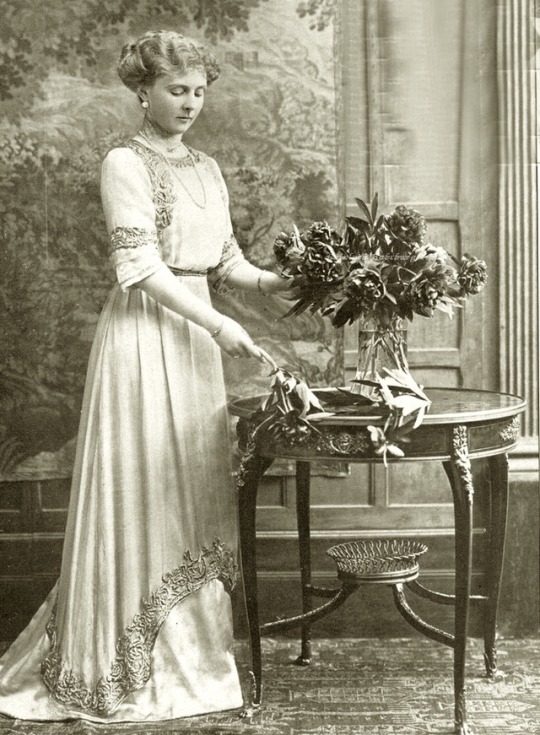
Princess Alexander of Teck, neé Princess Alice of Albany. Early 1910s.
#antique#vintage#1910s#antique fashion#beauty#20th century#royalty#Great britain#princess alexander of teck#Prince Alice of Albany#Countess of Athlone
256 notes
·
View notes
Photo
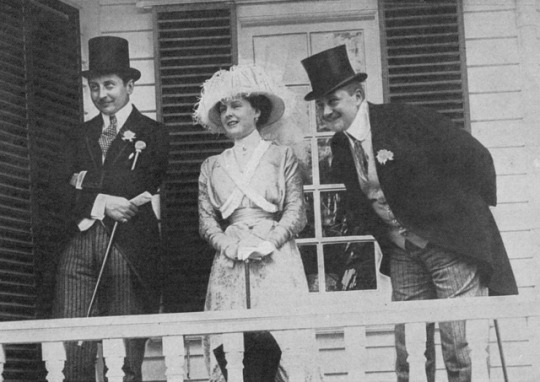
Prince Eitel Friedrich of Prussia; Princess Alexander of Teck (after 1917 Princess Alice, Countess of Athlone); and Prince Adalbert of Prussia watching polo at Ranelagh, Dublin, 1913
#royalty#royal family#countess of athlone#princess alexander of teck#prince eitel friedrich#prince adalbert#1910s#1913#ireland#dublin#ranelagh
30 notes
·
View notes
Photo

Queen Mary (then Princess Victoria Mary of Teck) and her brother Prince Alexander of Teck (later Alexander Cambridge, 1st Earl of Athlone)
23 notes
·
View notes
Text

Anglo-German Royalty
Francis, Duke of Teck with his three sons, Prince Adolphus, Prince Francis and Prince Alexander.
Photo taken at the Wedding of Prince Adolphus to Lady Margaret Grosvenor.
In order to maintain the British Royal Family, King George V had to change the German names but I prefer them.
Saxe-Coburg and Gotha, Teck and Battenberg sound better😌.
From the Royal Collection
The Duchess of Teck with her sons, Prince Adolphus and Prince Francis.
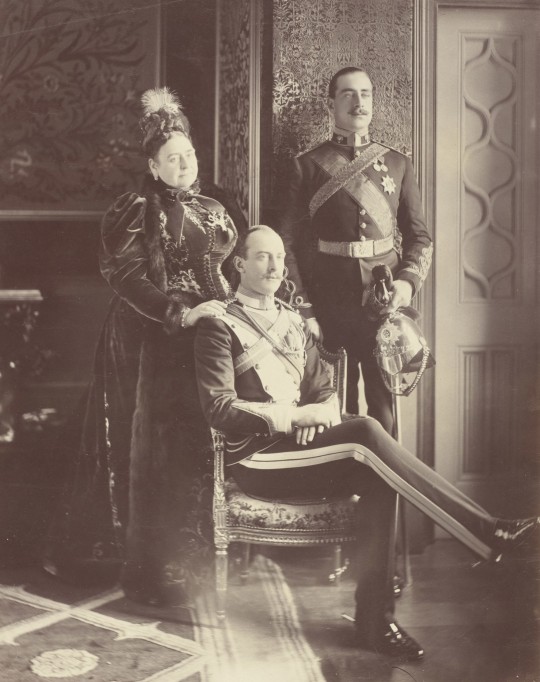
#duke francis of teck#prince adolphus of teck#duke adolphus of teck#prince francis of teck#prince alexander of teck#teck#german royalty#german royal#british nobility#württemberg#1890s#duchess mary adelaide of teck#1894
31 notes
·
View notes
Photo
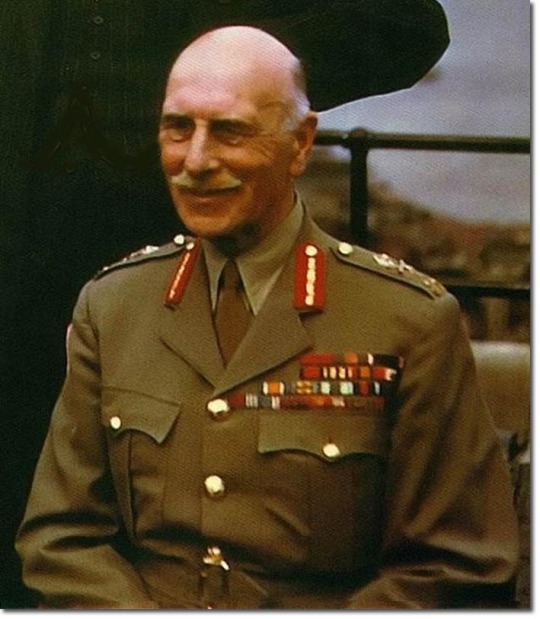
Alexander Cambrige, 1st Earl of Athlone. Born HSH Prince Alexander of Teck, in 1917 he renounced his German citizenship and titles and was naturalized as a British citizen and given the titles Earl of Athlone and Viscount Trematon by King George V. He declined a marquessate as he thought the title did not sound British enough.
He was one of the three brothers of Queen Mary.
20 notes
·
View notes
Photo




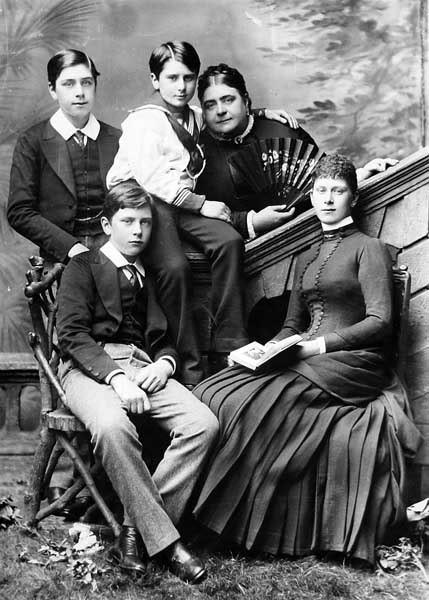

Princess Mary Adelaide of Cambridge (Mary Adelaide Wilhelmina Elizabeth; 27 November 1833 – 27 October 1897) was a member of the British royal family, a granddaughter of George III, grandmother of Edward VIII and George VI and great grandmother of Elizabeth II. She held the title of Duchess of Teck through marriage.
Mary Adelaide is remembered as the mother of Queen Mary, the wife of George V. She was one of the first royals to patronise a wide range of charities.
1. Portrait by Franz Xaver Winterhalter in the Royal Collection, 1846
2. Photograph by Camille Silvy, 1860
3. late 1890s
4. 1885
5. The Duchess of Teck and her family c. 1883; Prince Alexander sits centre with his arm around the Duchess, Princess Mary (later Queen Mary) is seated at far right.
6. c. 1880
44 notes
·
View notes
Text
Historical Sortings
I've done a lot of reading about royalty in the 19th century and I decided to have some fun and try my hand at sorting historical figures.
I wonder if you can tell who my favs and unfavs are from my sortings.
Cut for length.
British Royals:
Queen Victoria: Snake/Lion. An unhealthy Snake Primary who expected that level of unhealthy devotion from everyone around her. Probably burned a bit after Albert died. Also an unhealthy Lion Secondary who strong-armed, controlled, and domineered others, particularly her children.
I don't know too much about her husband, but I think Albert might've been an Idealist.
Edward VII, aka Bertie: Lion/Badger. His charm strikes me as more of a Badger than a Snake. He seems to me to be the ‘I know a person’ guy. Just the vibes I get. He also really liked routine and wasn’t a particularly good conversationalist, just genuinely interested in others. Not too sure about his primary, but I didn't get Loyalist vibes so I went with Lion.
Alexandra of Denmark {wife of Bertie}: Snake/Badger. She usually gets characterised as the long-suffering wife so it’s not surprising she’s the love interest sorting. She was loyal to her husband despite all his infidelities, and her interests were confined to her children and pets
Princess Alice {daughter of Queen Victoria}: Bird/Badger. Experienced a crisis of faith in middle age which I interpret as a Fallen Bird trying to reconfigure their system. Her dedication to helping others makes me think Badger Secondary. Also, she died after contracting diphtheria from giving her sick son comfort which seems like a very tragic Badger.
Prince Alfred {son of Queen Victoria}: Lion/Lion. He was wilful and abrasive, and had a no-nonsense attitude, so probably Lion Secondary. I can’t really get a read on his primary but maybe also a Lion. That would mean he and his wife houseshare, which might’ve contributed to the breakdown of the marriage.
Grand Duchess Maria Alexandrovna {wife of Alfred}: Lion/Lion. Very caustic and abrasive, I definitely wouldn’t want to be around her in real life but I admire her no-nonsense attitude and no tolerance for BS. Her marrying off her daughters young because she thought it was right makes me think Lion Primary.
Princess Beatrice {daughter of Queen Victoria}: Snake/Badger. She subjugated her entire life to fulfilling her mother’s needs and the only major conflict they had was over her wanting to get married (Snake on Snake loyalty conflict maybe). Very much a background character who worked behind the scenes, so Badger Secondary.
I don't know enough about Queen Victoria's other children to sort them.
George V: Badger/Badger. Dull, dutiful and dependable is how he tends to be described, which always makes my mind go to Badger (I swear, I love Badgers, they’re great but they’re not very flashy). Considering he refused to give sanctuary to his cousin Nicholas II because he was afraid he might threaten his own country and throne, I’m going with Badger Primary who put the good of his group over individual loyalty.
Mary of Teck {wife of George}: Badger/Badger. Duty and dignity defined her, so I think she was a Double Badger who was loyal to the institution of the British Monarchy and her family (above any individual member). Her and her husband houseshare, which might explain some of their parenting issues since neither could compensate for the other’s shortcomings.
Marie of Edinburgh, aka Missy {daughter of Alfred}: Snake/Snake. Charismatic and flamboyant, she started out as a young bride in a foreign country with no support and she ended her life as a beloved figure and the most popular member of the royal family. Part of this was her finding meaning in her life by working for the benefit of Romania, which makes me think she was a Snake whose loyalty came to include all of Romania. Also, she was disgusted with her son’s selfishness and his (initial) abdication of his rights.
Victoria Melita of Edinburgh, aka Ducky {daughter of Alfred}: Lion/Lion. Strong-willed, temperamental, and uncompromisingly honest, Ducky unabashedly followed her own course in life. She divorced her first husband despite family and social pressure, married her second husband despite protests from his family, and was no-one’s fool.
German Royals:
Victoria, Princess Royal, aka Vicky {daughter of Queen Victoria}: Lion/Lion. I read in her biography that someone was quoted as saying she was “always clever, never wise”, which I think just fits this sorting. You’ve really got to admire her steadfast belief in liberalism in the face of Prussian conservatism, but sometimes reading about her aggravates me because I’m like, can’t you chill for just a second. Like, stop doing the same thing and expecting a different outcome.
Frederick III, aka Fritz {husband of Vicky}: Lion/Badger. He and Vicky were really united in their shared Lion Primary and belief in liberalism, from which they never wavered. His indecision and constantly subjugating his beliefs to family loyalty make me think he of an unhappy Badger Secondary loyal to a group that doesn’t value him.
Wilhelm II {son of Vicky & Fritz}: Lion/Lion. Considering his fraught relationship with his mother I find him and Vicky having the same sorting to be kinda funny. But he was such a Glory Hound Lion, a total egomaniac, bombastic, and a bully. A deeply unhealthy Double Lion.
Augusta Victoria of Schleswig-Holstein {wife of Wilhelm}: Badger/Badger. Definitely an unhealthy Badger Primary, she exalted anything that was German and was prejudiced against anything that wasn’t. Probably a Badger Secondary too, who dedicated herself to her husband, children, and throne.
Otto von Bismarck: Lion/Snake. Also a Glory Hound Lion judging by his visceral reaction to the implication anyone but him was responsible for German unification. The ultimate politician and opportunist, his Snake Secondary allowed him to stay in power for decades and outmanoeuvre pretty much everyone until the system he created failed him. The irony of that is hilarious to me (Bismarck’s a figure I find interesting but utterly despicable)
Russian Royals:
Nicholas I: Badger/Lion. I’m going with Badger just on his dehumanisation of ethnic minorities, liberals, and anyone who opposed him. And he was known as the Iron Tsar, so definitely a Lion Secondary who crushed any dissent both large and small. Very ironic that he’s the Protagonist sorting, since he was someone who really wanted to do what was right for his country, but what he believed was right was the worst and he's generally considered one of the worst tsars.
Alexandra Feodorovna {wife of Nicholas I}: Snake/Badger. Similar to Alexandra of Denmark, she was defined as being the perfect wife, loyal to her husband and overlooking his infidelities, with few interests outside of her family.
Alexander II {son of Nicholas I}: Lion/Snake. Definitely not a Loyalist based on the way he treated his wife. Loyalists can commit adultery too, but if he’s a loyalist than he’s not one who valued his wife or their children. And he definitely gives me immature Lion Primary vibes, doing what makes him happy to the detriment of others, his family, and his country. He was known for his charm and congeniality, but his way of dealing with his ministers was to play each of them off each other which makes me think Snake.
Grand Duke Konstantin Nikolaevich {son of Nicholas I}: Lion/Lion. A total firebrand and idealist, he pursued his goals relentlessly and often tactlessly. Burned later in his life after his brother took a conservative bent and then Konstantin was basically removed from power after his brother’s death, so he retreated to life with his mistress and second family.
Alexander III {son of Alexander II}: Badger/Lion. Very similar to his grandfather, Nicholas I. Dutiful and hardworking, but also a lot of dehumanisation and running roughshod over others. Treated his family better than his father, and family was very important to him which could also be Snake.
Maria Feodorovna {wife of Alexander III}: Lion/Badger. She was vivacious and friendly and flourished in court life, which makes me think either Courtier Badger or Snake. I think Badger because she really understood the institutional power of the role of empress and was also really suspicious of anyone outside of the family. Nothing about her suggests Loyalist to me, but she was very firm in believing in the correctness of her own opinions. Her conflict with her daughter-in-law definitely makes sense when viewed through the lens of a Lion/Badger vs Lion/Lion
Nicholas II {son of Alexander III}: Badger/Badger. He garnered a reputation for duplicity because, since he hated conflict, he would agree with a minister during a meeting and then fire them via note the next day, so definitely not a Lion. Probably a Badger since he was obsessive over doing every single aspect of his job, including even sending letters and he refused a secretary. His attachment to autocracy derived at least partly from duty and he was very attached to his family, so maybe Badger Primary. He was also very close to his cousin George V and they houseshare.
Alexandra Feodorovna {wife of Nicholas II}: Lion/Lion. A deeply unhealthy Lion, she was obstinate, imperious, and completely inflexible. Wholeheartedly believed that she was entirely correct in her opinions, often based on little evidence, and objectivity was completely beyond her.
#sortinghatchats#it's certainly interesting to view this through the lens of family dynamics#and how your family's sorting affects your own#so many female snake/badgers#I wonder if that's their real sorting or just gender roles
13 notes
·
View notes